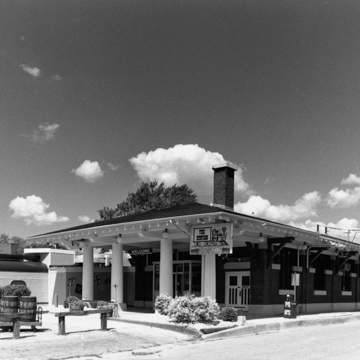Resembling a Craftsman bungalow, this stylish station recalls the golden era of electric interurban railroads. The North Shore line, originally the Chicago and Milwaukee Electric Railroad, reached Kenosha in 1905. In 1916, Chicago utilities tycoon Samuel Insull acquired the line, and four years later, the North Shore stretched from Chicago’s Loop to downtown Milwaukee. By the late 1920s, its tracks were among the best-built of any interurban, its trains consistently clocked among the fastest, and its parlor-observation and dining cars ranked among the most luxurious. Despite competition from automobiles, the line continued its proud tradition until 1963.
In 1922, at the height of its heady expansion, the line built this new Kenosha depot. The architect was probably Chicago’s Gerber, who designed many of the railroad’s buildings. Here he used one of several standard plans for North Shore depots. The one-story red brick building has a low-pitched hipped roof, originally covered with green Spanish tiles. The wide-overhanging eaves, exposed rafter tails, and triangular knee braces all typify the Craftsman style. Four large, unfluted columns of cast concrete support the broad front veranda.









